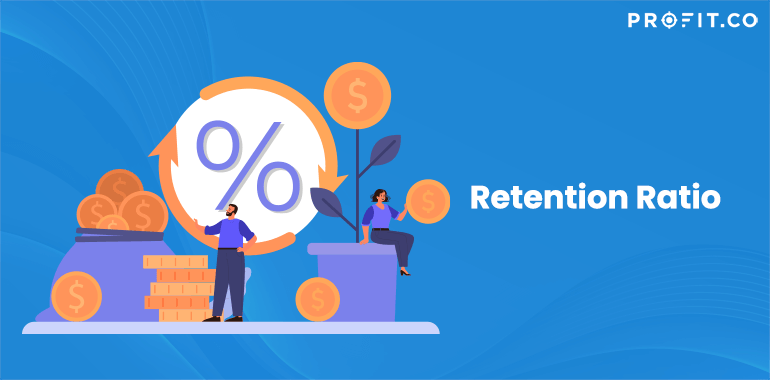The retention ratio or plow back ratio is the calculation that shows you exactly what percentage of your net income is retained for the business and what goes to pay the shareholders as dividends. It may seem a little complicated, but if you know what the payout ratio is, you’re on the right track. Basically, the retention ratio is the opposite of the payout ratio. The latter is the percentage of earnings paid to the shareholders.
This measure is an important one because it reveals how much a company is reinvesting in its operations. Basically, the money left at the end of the fiscal year could be invested in the business or it could be used to pay the shareholder. If the profit is great, the profit could be shared between the company and shareholders.
Retention Ratio Formula
The formula is quite basic and can be remembered very easily, especially when the profit adds up.
So, this calculation may help you have a better understanding of what’s going on with your profit by dividing the net income and the dividends distributed to the net income.
Now, to avoid any confusions, the formula will look like this:
If you fancy simpler formulas, go ahead and divide the Retained Earnings by Net Income and you will get the same result. The simplified formula will be something like this:
Formula Analysis
In other words, the formula is a good prediction asset that most companies have. You are asking yourself what could predict this basic formula. Well, the retention ratio predicts how well a company will deal in the future with its net income. For example, almost all tech companies have the same strategy – to pay their dividends later on so they can focus on production rather than paying away all the money from the net income.
It may seem risky to put the payments on hold, but it will make the difference between success and failure. You may think that higher retention rates are good but think again. Higher retention rates mean that the company does not pay its dividends, so this could be a problem, only if you’re not a tech company.
Be advised that the ratio will change from one year to another, depending solely on the profit that the company makes. It is better to have a stable retention ratio than to overgrow it and cause a lot of troubles.
Final Statements
To conclude the above information, you should know that the retention ratio will be a company saver if the money is invested correctly. Keeping track of what amount of money is used to pay the dividends and what goes to the company itself for investments is a great thing. If you don’t get the calculations just fine, the amount of money to pay the dividends will be greater and there will be almost none for the company to invest.
